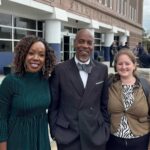
Adequate education opportunity, according to state statute, is formulaic. It’s been so since 1993, when the Education Reform Act was passed within a week of the Supreme Judicial Court’s McDuffy ruling. The enforceable duty to “cherish the … public schools” was fulfilled by billions allocated annually in Chapter 70 aid.
Since then, the formula has outgrown its fundamentals. Public school enrollment is down 36,000 students in the last six years. The equity component — the foundation budget — has lagged Massachusetts’ total wealth and income steadily since 2007. Major annual aid increases are accompanied by word of hiring freezes, layoffs and cutbacks.
Meanwhile, over half of Massachusetts’ 351 municipalities reached a statutory cap that ensures state aid for wealthy communities. Legislators are negotiating over record-setting figures, $104 or $110, for a regressive per-pupil minimum aid increment. The status quo may last until the end of the decade.
In sum, this is the reaction to news of our yawning achievement gap. Education experts have advice for improvement.
Originally indexed to inflation, the formula has been sporadically overhauled since 1993. Roger Hatch, a former administrator of school finance for the Department of Elementary and Secondary Education, recalls legislative and administrative reviews before the 2014 Foundation Budget Review Commission. Bigger base-rates it suggested in 2015 were adopted in 2019 and will fully kick-in for fiscal year 2027.
The Education Reform Act of 1993 mandated one such commission every three years. The Student Opportunity Act of 2019 requires one every decade. Some presume that means 2029.
A table of base-rates for different demographic groups standardizes spending expectations across districts. Separately calculating what a municipality can afford, called target local share, the state ultimately awards the difference as foundation aid.
The base-rates are equity policy. The higher the rates, the more progressively state aid and local tax dollars must be spent on high-needs populations.
Since formulas create “winners and losers,” Hatch argued, “it’s so hard to change the school finance formula.” He credits the legislature with success in “1992 and then also again in 2019” persevering through political pitfalls. More frequent attention would be positive, he said. “We want our formula to be robust” and “let’s revisit it as often as we can.”
Hatch hopes the public will study up on Chapter 70, adamant none should fear its “black-box” brand. He said, “They publish all the data.”
For Tripp Jones, the Education Committee’s staff director in the early 1990s, “the fundamental issue we were trying to address was this inequality” in school funding and to encourage effective spending habits by school districts.
He said the committee heard “all kinds of examples of communities graduating students who clearly did not have the educational attainment levels that their graduation requirements would have suggested that they did have.” Adults, he said, would argue the kids “deserve a diploma” even if the students were “being sent out into the world with significant literacy issues” in English or math.
The ‘93 reform created a “minimum standard of effort” for municipal taxation, said Jones, now the principal at 21c.
The “extremely progressive” school aid, Jones said, was a point of pride that “reflected extremely well on the legislature.” At the time, public education investments were accepted as a “civil rights” and “social justice cause.”
Jones said policymakers studied Kentucky’s reform model before passage of the 1993 law. He recalled an inspirational meeting with Jack Rennie and Paul Reville of the Massachusetts Business Alliance for Education to discuss their 1991 proposal, “Every Child a Winner!” The Education Committee, he said, held some 200 meetings to build consensus.
Ed Lambert, a former state representative, served on the Education Committee in that era. He leads MBAE today. For “poorer communities like mine, Fall River,” he said, “there just was no way to keep up” and “provide the kind of quality that existed in wealthier communities.”
The Chapter 70 formula, Lambert said, considers municipal “income and property values” to say “here’s what we think they can afford, and the state will pick up the rest.”
MBAE “focused not just on the money, but on reform and accountability,” Lambert said. Resources and accountability, he argued, are mutually dependent. Over simply spending money, the legislation reformed teacher tenure, established charter schools and set statewide curriculum standards.
Jones articulated attempts at “innovation and experimentation” so Massachusetts could test out public policies. Specifically, he highlighted the assessment of educational attainment.
Lambert described recent enrollment declines as “a demographic trend” only “hastened” by COVID-19. “A lot of parents voted with their feet,” he said. A hold harmless provision maintains prior funding levels, even if enrollment declines. Lambert recommended phasing out old enrollment numbers over time.
The current policy, “ironically… works as a disincentive for communities to create housing,” he argued, since it is “financially rewarding districts for limiting their student population.”
He also took aim at the 82.5% cap on target local share. MBAE’s research found some districts were spending “four or five times over the foundation budget,” he said. “And yet they’re still getting all this state aid.”
This year, the cap accounts for roughly $914 million in financial obligations on the Commonwealth.
Lastly, MBAE opposes the minimum per pupil aid allocation. Describing it as a gift, Lambert said “it goes to every district without regard to need.”
MBAE’s 2020 “Missing the Mark” report “identified 14% of the Chapter 70 funding, about $700 million” being distributed need blind.
While the report didn’t criticize a wage adjustment factor that primarily applies in the Boston-Cambridge-Newton NECTA region, Lambert is personally not a fan.
With formula-changes scheduled through FY 27, struggling districts cannot expect immediate relief.
Lambert was baffled by the plight of some major beneficiaries. “There’s been a ton of money poured into Brockton,” he said. Citing “$25 million annual increases in state aid” and major federal assistance, he said “it’s incredible that they’re laying people off.”
Extrapolating, he depicted a “political problem” wherein elected officials from middle class communities wonder whether Chapter 70 money is being well-spent. Legislators’ buy-in is currency on Beacon Hill.
High-need students, he insists, are worth it. “We’ve got some of the highest achievement gaps in the country,” Lambert said. “So, we got to do more, but we also got to spend it in the right way.” He argued “in both instances, it’s about helping kids.”
“The politics are such that unless the populace, writ-large, is comfortable with the kinds of changes and investments that are being made,” Jones said, “it’s hard to imagine the body politic being willing to continue to do the work necessary to address the issues.”
Concluding that poor communication accounts for complacency, Jones argues, “We don’t do enough to disaggregate data and present it in a way in which it’s screaming clear as it should be just how unequal these performance metrics are.” Public servants, he said, aren’t encouraged to speak up. “There’s a lot of pressure that’s put on people to be careful about how they present information like this,” Jones said.
After the SJC’s 2004 Hancock decision, judicial enforcement will not deliver legislative action. The political branches, governor and General Court, are responsible for the constitutional mandate.
For Tripp Jones, the legislature was always on the hook. “As much as that court case could be considered to have been a factor,” Jones said, “now, in hindsight, there was a ton of proactive legislative leadership.”






